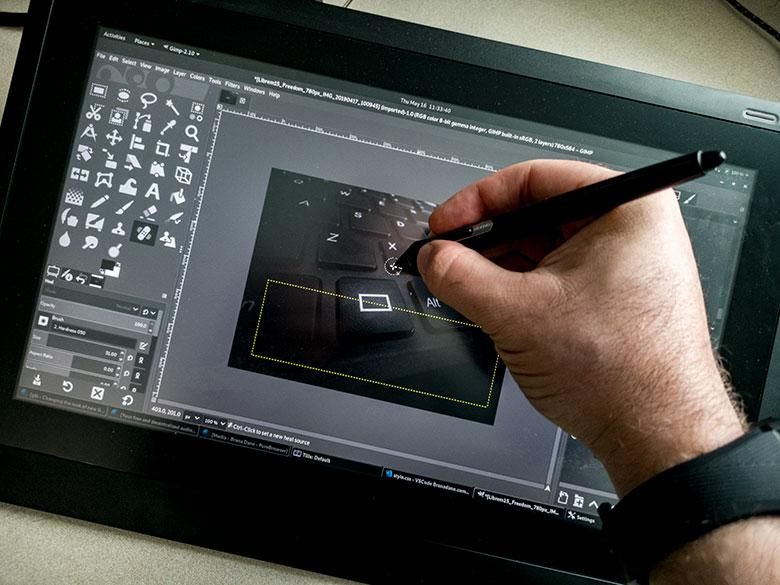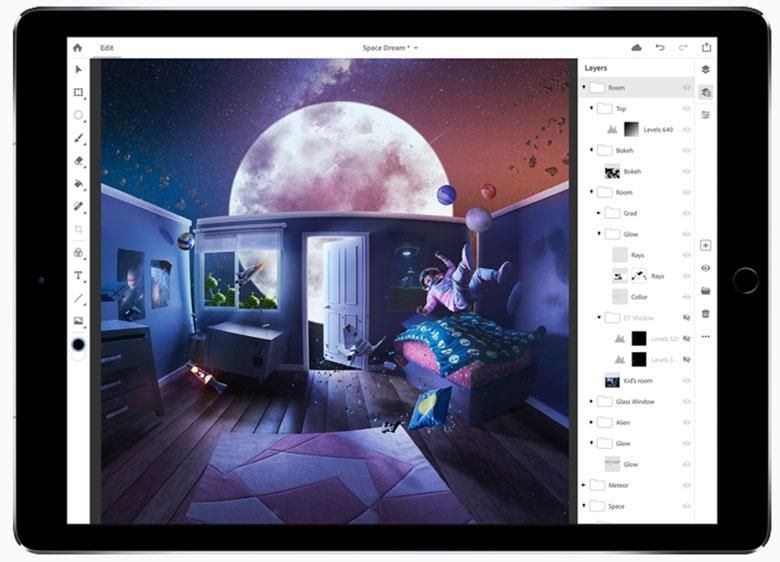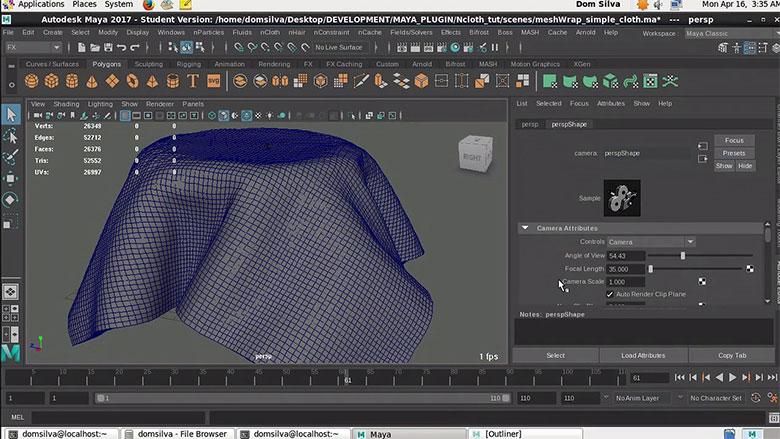You may have heard that Adobe has been working on bringing “real” Photoshop CC to the Apple iPad. It’s not the real Photoshop that you can get on Windows or macOS, but it is going to be a lot better than the other versions of Photoshop that Adobe has made for iOS. Some are saying this may foreshadow the demise of macOS as Apple moves more towards iOS and their own ARM-based chipsets. Still, iOS has never been that great for professional-grade graphics and the hardware choices are pretty narrow.
I think that maybe it’s time for professional grade software and hardware makers to team up and put together their own “Creative Pro” version of Linux.
Back in the 1980’s most graphics programs were made only to work on macOS. It was the only computing operating system at the time that really worked well with Postscript printing. Then in the 1990’s when Windows NT came around, many professional grade graphics programs started showing up on that… partly because of its much more advanced memory management and also because it ran on very powerful hardware like the DEC Alpha. This is often how blockbuster movies like Titanic were created.
Many high-end special effects studios now use Linux for 3D animation and rendering farms, but they still need to use macOS and/or Windows for certain graphics production mainly using Adobe CC. Autodesk Maya is the go-to program for 3D animation and that runs on Linux Cent OS as well as Red Hat Linux. So that’s the thing many studios use, often in combination with their own proprietary programs.
Sorry, but that still isn’t professional-grade Photoshop running on iOS.
There are often posts in the Adobe user forums and elsewhere wishing that Adobe would make all of their Creative Cloud programs available on Linux, but Adobe never put any effort into it because the Linux creative pro user community is so small. Linux is very fragmented, too! There are tons of different Linux distributions out there, even if you did do some work in porting the programs, it would be a nightmare to support them. Some Linux community members have suggested getting Adobe CC to work with WINE (a software layer that mimics Windows APIs) in order to get the Windows versions running on Linux as that would be the easiest method. Adobe probably doesn’t want to give Linux & WINE developers access to their code though, and that’s understandable, but…
What if they made their own version of Linux?
What if the largest Creative Pro software & hardware makers became allies and cooperated in modifying an existing Linux distribution into something that worked really really well with all of their professional grade software, services, and hardware?
Right now, Adobe, Autodesk, Corel, Pixelogic, Serif, Wacom, etc. all have to deal with whatever hardware and operating system software Apple or Microsoft make available. They’re all at the mercy of those two companies. Apple doesn’t care so much about the creative pro market anymore since their iOS devices are so much more profitable. I mean, the last Mac Pro was released in 2013 and still none of the Macs have pen digitizers built into their screens! Microsoft had a little bit of interest in the creative pro market with their Surface Pro and Surface Studio devices, but then the Windows team went and totally broke the pen interface. Both Apple and Microsoft can and have broken the creative professional’s workflow at times and that can be very frustrating when there’s work to be done.
That seems like a good reason to make your own operating system that’s optimized for your specific professional creative software and your specific professional hardware. Linux distributions have matured a lot over the years. Many versions are much easier to use than they used to be. With an alliance focused on “Creative Pro Linux”, each company could add whatever components they need to the operating system in order to make their particular software and hardware work really well. Adobe could make a specialized version of WINE to support their programs. Autodesk could add the things Maya needs to run along with whatever WINE components are necessary for their other products.
High end 3D graphics and animation with Autodesk’s Maya already works on Linux.
Wacom hardware is pretty well supported by the Linux community (Jason Gerecke‘s drivers are already built into many distributions). Wacom is also building high-end computing hardware such as the Mobile Studio Pro (which we love) and Wacom Cintiq PC Engine. Those both run Windows, because that’s really the only choice for a creative pro workstation maker at the moment. It should be pretty simple for Wacom’s engineers to support a single “Creative Pro Linux” distribution. HP has been targeting creative professionals with some of their “Z” workstation hardware as well. I’m sure they would be interested in supporting a Creative Pro Linux alliance, too.
Of course, “Creative Pro Linux” should remain free and open-source in order to take advantage of everything else the Linux community has to offer, but there could be an integrated app store where users could purchase the applications that they want to use. Or, at the very least, there could be a repository that includes trial downloads or proprietary installers (like Adobe CC) for lots of creative pro software. Keeping “Creative Pro Linux” free would allow anyone to download and install it on their own PC or Mac hardware as well, thus increasing the user base and enticing more professional-minded manufacturers to join the cause.
Microsoft has started embracing Linux with including the Linux subsystem with Windows 10 and supporting Linux systems on Azure. MacOS has been a locked-down proprietary version of BSD Unix for almost 20 years. In fact, part of what macOS is based on; the Darwin OS, is still free and open-source. Building a Creative Pro OS on Darwin might be another option, but I think going the Linux distribution route will be much easier and better for the ecosystem.
Microsoft and Apple might be mad
Yes, it’s probably true that Microsoft and Apple might be a bit upset if a whole slew of Creative Pro heavy hitting software makers started targeting a jointly-made free operating system, but creative professionals kind of need something to use for actual work and we’re not really getting that from Apple or Microsoft anymore. Even the threat of all of these creative pro software and hardware makers choosing to support a “Creative Pro OS” could probably kick both Apple and Microsoft into gear. It could have the same effect that Microsoft’s Surface Pro had on PC manufacturers. When Microsoft released that and it started selling really well, Wacom responded with some much-more pro-friendly tablets such as the Cintiq Companion and Mobile Studio Pro… as did HP… as did Dell… and now we have some great creative-pro-friendly hardware choices!
Maybe it’s time for some serious professional-grade operating system competition.



